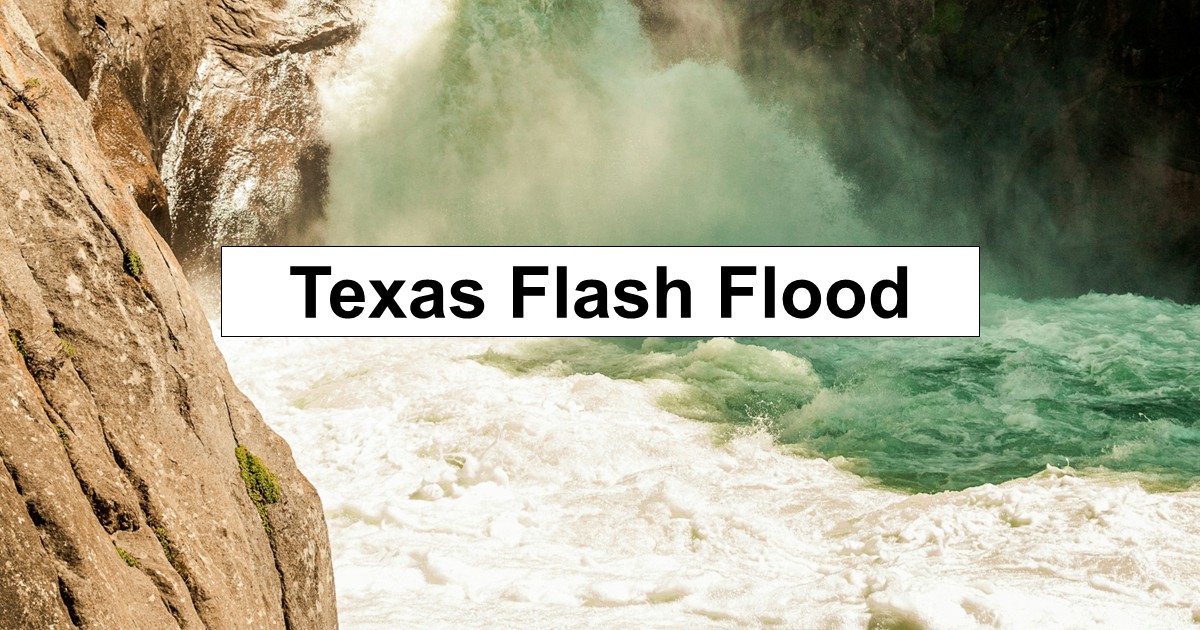The Fourth of July should be a time of celebration and fun family gatherings. Sadly, natural disasters don’t take a pause for holidays. Instead, this year it became a nightmare for hundreds of families in Kerr County, Texas. As of this writing, more than 100 people tragically lost their lives in sudden flooding, including dozens of children.
What makes this tragedy even more disastrous is that it happened in an area locals apparently know all too well. Although I’m unfamiliar with the area, it appears that Kerr County sits in what meteorologists call “Flash Flood Alley” because it’s prone to these sorts of disasters. It’s like “Tornado Alley” where I’m from here in the Midwest.
My guess is that it floods rarely enough that people think it can’t happen to them, which makes the area even more dangerous because people become complacent. Or, the area flooded so heavily that area not normally prone to danger became dangerous.
From what I gather, these hills create the perfect funnel for deadly flooding. When heavy rains hit the rocky, steep terrain, water has nowhere to go but down. The soil can’t absorb the water quickly enough, and creek beds that look dry and safe one moment become raging torrents the next.
Here’s a recent video of the aftermath, though there are plenty others and probably more recent ones too:
The footage shows just how quickly everything changed, including several interviews of the thousand or more survivors. It’s clear what happened: one moment, people were enjoying holiday activities or possibly still sleeping; the next, they were running for their lives against walls of water that seemed to come out of nowhere. But the water didn’t “come out of nowhere.”
The Danger of “Everything Seems Fine”
I experienced flooding as a child in California, though nothing close to this scale. It actually happened twice due to a poor city sewer system. Even that relatively minor event taught me how quickly water can seemingly “come out of nowhere.” The flooding entered the first level of our home and damaged carpeting, walls, and more. But we had some warning, at least, I think so because I was just a kid and can’t honestly remember. Even so, we had some time to prepare by moving furniture to the second level of our home as I recall.
Anyway, this is where a survival mindset becomes crucial. The most dangerous moments aren’t always when storm clouds are clearly gathering and the sky appear ominous. Sometimes the deadliest situations develop when everything seems fine … until it isn’t. People were out enjoying the holiday morning. Maybe kids were playing and parents were working on breakfast. Then, suddenly, with almost no obvious warning, that all changed in minutes.
But it also appears that the national weather service had issued several warnings about the potential for flash floods, even the day before according to this timeline of events. My belief is that if people were aware of these warnings, they could’ve been saved.
This is yet another example as to why prepping matters: Weather awareness isn’t just about checking the forecast the day before you leave for vacation. It’s about understanding that conditions can change rapidly, especially in areas with well-established risks. As we, humans, have discovered yet again, flash floods can happen almost instantly. But by the time you see the water coming, it may already be too late to reach safety. And this is what seems to be the case for this tragedy.
Technology Can Save Lives
This tragedy highlights why having weather alert apps on your phone isn’t just a convenience, but a potentially life-saving technology. I tell people that their smartphone is “one of the most powerful survival tools” they own, and for good reason.
Yes, there are many problems with smartphones and addictive behavior, specifically, and you should absolutely have plenty of preparations at home, in your vehicles, and even on your person, but knowledge is power, especially with respect to weather alerts. Smartphones provide near infinite knowledge and real-time weather alerts, but only if you have a way to get these alerts in the first place.
In fact, weather alerts can provide warnings for flash flood conditions and so much more, sometimes giving people precious seconds (if not minutes) to take action and move to safety. In Flash Flood Alley, those minutes could’ve meant the difference between life and death.
Weather apps (with push notifications) can alert you to watches and warnings even when you’re not actively checking the forecast, which is precisely why they’re so useful. They can wake you up in the middle of the night if dangerous conditions develop; they can warn you when you’re travelling; and they can give you many hours of notice (as was the case here) if you allow them.
What I can say is that it never hurts to have a weather alert app or two on your phone. Go to your favorite app store (Apple Store or Google Play) and search for “weather alert app” and you’ll find many options. I prefer NOAA Weather by Pandamonium Software and Emergency: Severe Weather App by American Red Cross, but whatever you choose is probably fine.
Important: Ensure you can enable real time alerts, that it allows for current condition alerts, and perhaps most important, that you can enable “current location” alerts so that you receive alerts wherever you are.
If you really want my take on smartphone apps, I recently updated my book on the topic. Feel free to email me, damian (at) rethinksurvival (dot) com, tell me you read this article, and I’ll be happy to send you a copy for free.
Take care and God bless.

Leave a Reply